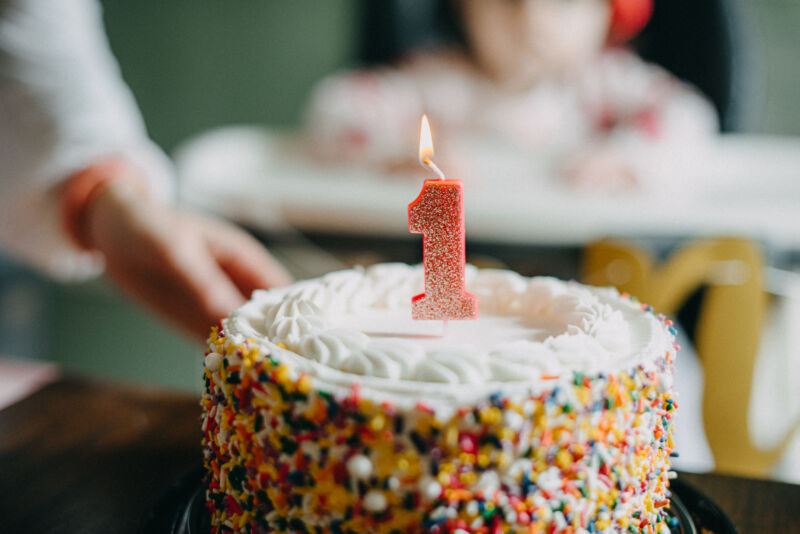
A recent baking trend of using "luster dusts" to give cake frostings and decorations a shimmery look has poisoned young children with heavy metals in at least two states, health researchers warn in a new report published Friday.
A toxic birthday cake for a 1-year-old left six children (ages 1 to 11) severely ill with vomiting and diarrhea after an October 2018 birthday party in Rhode Island. One child needed to be taken to the emergency room.

Investigators from the Rhode Island Department of Health traced the illnesses to the cake's thick layer of frosting laced with a rose gold "luster dust." The cake was produced in a commercial bakery, and the health investigators identified three possible sources of the bakery's luster dust. One was an importer who identified the dust as "fine copper powder" that was initially sold as "metallic pigment for consumer goods such as floor coverings." Though the dust was labeled "nontoxic," it was also labeled "nonedible."
Laboratory testing indicated that the birthday cake's frosting contained 22.1 milligrams of copper per gram of rose gold frosting, which would equate to nearly 900 mg of copper on each cake slice. That is 1,000-fold higher than the daily recommended intake of copper for adults, let alone children. According to the National Institutes of Health and the Food and Drug Administration, the recommended daily intake of copper is 0.9 mg for adults, 0.2 mg for infants up to 1 year old, and 0.3 mg for children ages 1 to 3. The NIH notes that copper can be toxic and recommends an upper limit of just 1 mg in children ages 1 to 3.
The health investigators in Rhode Island concluded that the children had copper metal poisoning, which can cause liver damage, abdominal pain, cramps, nausea, diarrhea, and vomiting.
Alarmingly, the health department investigated 28 other inedible luster dusts from the bakery that produced the toxic cake. The other dusts contained elevated levels of aluminum, barium, chromium, copper, iron, lead, manganese, nickel, and zinc, the investigators found. And after visiting other commercial bakeries, health investigators realized there was widespread use of such inedible luster dusts. The department subsequently issued health guidance to the bakeries to stop using inedible dusts, and the FDA issued an advisory.
Dangerous labels
But that wasn't the end of it. In May of 2019, investigators with the Missouri Department of Health found high levels of lead in a bright yellow primrose petal dust that was added to decorative flowers on a 1-year-old child's homemade birthday cake. The dust was sold by a Florida cake decorating company and was labeled as a "nontoxic" coloring for baked goods, candies, chocolate, and sugar art.
But laboratory testing indicated that the dust was 25 percent lead. Testing on the child found blood lead levels of 12 μg/dL. Just this week, the Centers for Disease Control and Prevention lowered the blood lead reference value from 5 µg/dL to 3.5 µg/dL, meaning that any level above 3.5 µg/dL is a cause for action. That level represents the 97.5th percentile of the blood lead values among US children ages 1 to 5 in recent years. Lead is a potent neurotoxin, and there is no level of lead that is considered safe.

The details of the two poisonings appear in a report published today in the CDC's Morbidity and Mortality Weekly Report. The authors—health officials from Rhode Island, Missouri, and the CDC—call for better labeling.
"Labeling indicating that a product is nontoxic does not imply that the product is safe for consumption," the authors warn. "Explicit labeling indicating that nonedible products are not safe for human consumption is needed to prevent illness and unintentional poisonings."
In the meantime, the authors and the FDA caution bakers to look carefully at labels. Most edible decorations usually include the word "edible" somewhere on the label and are required to include an ingredient list. If they don't, don't take chances.
"If the label simply says 'nontoxic' or 'for decorative purposes only' and does not include an ingredients list, the product should not be used directly on foods," the FDA advises.
Read Again https://arstechnica.com/science/2021/10/toxic-frosting-children-poisoned-with-lead-copper-from-cake-decorations/Bagikan Berita Ini














0 Response to "Children poisoned by birthday cake decorations loaded with lead, copper - Ars Technica"
Post a Comment